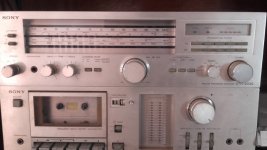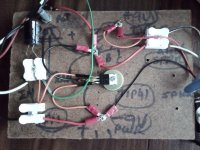Yeah, put everything in there: he (he's a he for sure!) talked about Marantz and Boston Acoustics and a way to make those speakers sound with SE amplifiers. Given the fact that you need at least 3 transitorsOK, so let's look at the options, taking into account the original poster's remarks from 2010.
And not One...but that's also a 'power follower' or booster.
The thing is that nowadays I have a similar system:
A 10" old Ciare Woofer and a B&C DE07 tweeter, and use It for party outdoor with a Pioneer with STK3130(??) and things get hot and very hot when enjoying dancing et all...
OK so the TIP41 is available locally, a few dollars including delivery. Equivalent.
Have a look at the other transistors on the page, could they sound better?
Transistors | Transistors Price in Sri Lanka
Cheap chip amps from a TV or Computer speaker will sound the same if not better than these silly simple circuits.
Diy electronics is fun, dont get me wrong.
But using a old car stereo would be better at this point. And not hifi still
Diy electronics is fun, dont get me wrong.
But using a old car stereo would be better at this point. And not hifi still
I have an amp I made from a TEA2025B based PC speaker board. And yes it sounds good. Maybe better than the SE that I put together. It sounds better because I have connected it to better than the original PC speakers. The large, hand-luggage sized Sony ES 333 boxes.
If I connect a less than average SE transistor amplifier to the same speakers, maybe based on the TIP41, it will sound better than a PC speaker. It will sound better than the existing Sony ES receiver, because that receiver is now broken. I am just beginning to experiment with these things, but it does seem that you do not need 100 Watts (Per channel). So why not try it out? There are a lot of variables here, and it seems that the latest bookshelf speakers offer clear, detailed, open sound with sufficient bass to boot. Will my amplifier sound good with those? Maybe.
D718? Well, let me get some of those as well to compare. And I do not need expensive test equipment, Mr Guttenberg says 'use your ears'.
Is it possible to measure sound quality? I don't think so! - YouTube
Steve Guttenberg seems to think so.
You don’t need 100 watts per channel - YouTube
If I connect a less than average SE transistor amplifier to the same speakers, maybe based on the TIP41, it will sound better than a PC speaker. It will sound better than the existing Sony ES receiver, because that receiver is now broken. I am just beginning to experiment with these things, but it does seem that you do not need 100 Watts (Per channel). So why not try it out? There are a lot of variables here, and it seems that the latest bookshelf speakers offer clear, detailed, open sound with sufficient bass to boot. Will my amplifier sound good with those? Maybe.
D718? Well, let me get some of those as well to compare. And I do not need expensive test equipment, Mr Guttenberg says 'use your ears'.
Is it possible to measure sound quality? I don't think so! - YouTube
Steve Guttenberg seems to think so.
You don’t need 100 watts per channel - YouTube
but it does seem that you do not need 100 Watts (Per channel). So why not try it out?
Between 1W (Hey, where's the heatsink??!) of a tea2025 and 100W there's an ocean.
Read his earlier posts and decide for yourself.
Such as the single BC548 amplifier powered by a dying 9V battery, still with some 4V left.
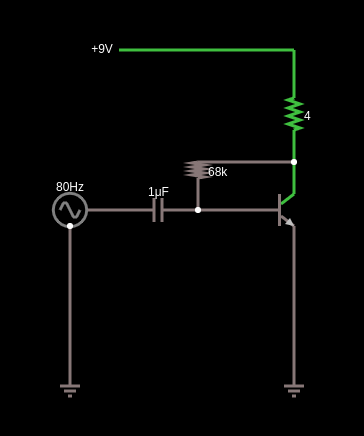
or his choice of parts suppliers:
or his generous tolerance on parts values:
He insists on single transistor "toys" or classroom "demo circuits" because that´s the maximum complexity he can handle.
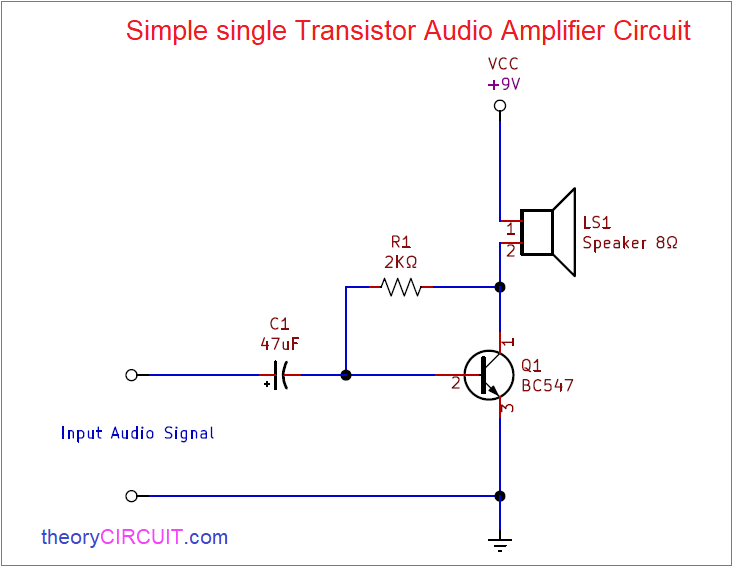
Fine as an example, but don´t use them to replace any real amp to listen at real volume in a room.
Imagine using folded paper planes as an Aerodynamics classroom example: fine so far.
Now try to fly somewhere in one of them.
Same thing.
You have already been answered:
Such as the single BC548 amplifier powered by a dying 9V battery, still with some 4V left.
The battery is getting warm and also is down to 4 Volts in operation.
or his choice of parts suppliers:
Which ... ummmm .... does not seem to offer best quality parts since:Transistors are very commonly found in phone chargers and other things. I opened up a phone charger to find two
Something wrong with the transistors - no difference if they are connected or not.
or his generous tolerance on parts values:
What could be wrong? I could not get the required 95K resistor, could that be the problem? Using a 10 Ohm.
He insists on single transistor "toys" or classroom "demo circuits" because that´s the maximum complexity he can handle.
but uses two transistors - I am not too confident in using two transistors connected to each other

Fine as an example, but don´t use them to replace any real amp to listen at real volume in a room.
Imagine using folded paper planes as an Aerodynamics classroom example: fine so far.
Now try to fly somewhere in one of them.
Same thing.
Mr Basic HiFi, you don't seem to understand the basics of HiFi!
You have already been answered:
Attempting at teaching and guiding rainman is a futile mission.
Last edited:
YouTube is filled with videos with powerful amplifiers 100 W (1000 W) on one (two) BJT powered by a phone charger 🙁
Greta Tunberg?
In Russia, a girl at 8 years old passed school exams for 11 classes. She was accepted as a student at the Faculty of Psychology of Moscow University.
She was taught at home by her parents.
Greta Tunberg?
In Russia, a girl at 8 years old passed school exams for 11 classes. She was accepted as a student at the Faculty of Psychology of Moscow University.
She was taught at home by her parents.
Last edited:
OldDIY that site your posted the link to is the clearest I have seen and is nicely written. It is suitable for rainmen and other intell ic tuals, don't you think?
All questions will be answered. I am having fun though, not Hi-Fi but Hi-Fun.
All questions will be answered. I am having fun though, not Hi-Fi but Hi-Fun.
OK guys, I know, this is just dabbling with audio, not really Hi-Fi at all. Oh I aim to get there finally. So what do you suggest, what are you trying to tell me?
Start with the LM1875 project and then what speakers should I get / build? Open Baffle? What sort of budget are we looking at finally? Maybe a chip amp. I mean show me the Holy Grail so I can maybe drink from that cup one day.
I am probably looking like a go-cart builder to a Ferrari owner. I respect your concern and your advice, so go for it. Tell me what I should do (if you have not already). And I won't try to teach you about Hi Fi.
I will tell you my side of the story. Some of it has to do with WAF if you know what I mean. The other half has to do with a totally antiseptic type amplifiers that the industry puts out (ok on the low end) and the soundbars and boom boxes they try to sell me.
There is only one Hi Fi store in the country and I have visited it, with Dali speakers I was not so impressed. The Bose system played very loud at the dealers. He was demoing an Mp3 Cd.
The best I have heard, comparable to my TEA2025 and assorted speakers around the home, is this one from Singer. Nice little unit, complete with its commercial fizzy crackle coming out of the speakers softly but decent control.
Buy Singer Mini Hi Fi Systems With Bluetooth 80 WRMS Online in Sri Lanka - SINGER
I almost bought one.
We are all friends here I hope.
Start with the LM1875 project and then what speakers should I get / build? Open Baffle? What sort of budget are we looking at finally? Maybe a chip amp. I mean show me the Holy Grail so I can maybe drink from that cup one day.
I am probably looking like a go-cart builder to a Ferrari owner. I respect your concern and your advice, so go for it. Tell me what I should do (if you have not already). And I won't try to teach you about Hi Fi.
I will tell you my side of the story. Some of it has to do with WAF if you know what I mean. The other half has to do with a totally antiseptic type amplifiers that the industry puts out (ok on the low end) and the soundbars and boom boxes they try to sell me.
There is only one Hi Fi store in the country and I have visited it, with Dali speakers I was not so impressed. The Bose system played very loud at the dealers. He was demoing an Mp3 Cd.
The best I have heard, comparable to my TEA2025 and assorted speakers around the home, is this one from Singer. Nice little unit, complete with its commercial fizzy crackle coming out of the speakers softly but decent control.
Buy Singer Mini Hi Fi Systems With Bluetooth 80 WRMS Online in Sri Lanka - SINGER
I almost bought one.
We are all friends here I hope.
Last edited:
My goal is to replace
Back to the OP
My goal is to replace this: Sony STR-333S Receiver:
Back to the OP
My goal is to replace a Marantz 2226B with a DIY integrated amp. So far I have had good results, but not enough to beat out the Marantz ( it may never happen). I have 90db speakers and can blow go too loud with 4-5 watts. Personally I like lower watts.
My goal is to replace this: Sony STR-333S Receiver:
Attachments
The amplifier on one transistor passes the DC through the speaker. You can blow your speakers faster than you like 🙁
Heavy, hot, expensive - this is class A. Especially SE. You will need a powerful power supply unit (100 watts or more) and large heatsinks (several kilograms).
Class A, 4 Watt, No Feedback, Simple Circuit, Great Sound
JLH 10 Watt class A amplifier Watch from the end.
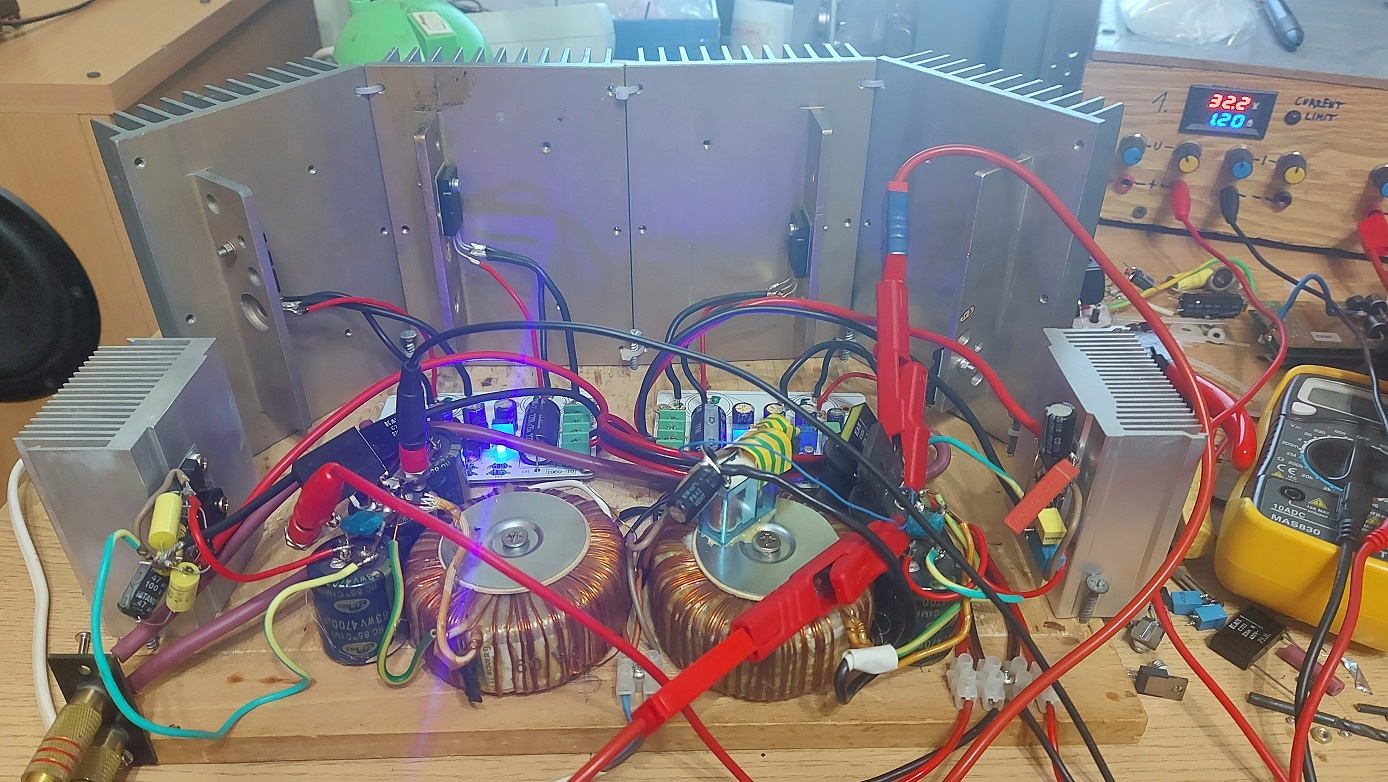
Heavy, hot, expensive - this is class A. Especially SE. You will need a powerful power supply unit (100 watts or more) and large heatsinks (several kilograms).
Class A, 4 Watt, No Feedback, Simple Circuit, Great Sound
JLH 10 Watt class A amplifier Watch from the end.
Last edited:
You can see a kit of a 50 W class D amplifier with bluetooth and control from a smartphone on Aliexpress. This is a 50x50x16mm board for a few dollars. You need a laptop power supply.
TPA3116D2 new amplifier
You can buy JLH1969 mini PCBs for $ 2. The power supply, heatsink and case will cost $ 100.
TPA3116D2 new amplifier
You can buy JLH1969 mini PCBs for $ 2. The power supply, heatsink and case will cost $ 100.
Last edited:
Yes, so I can add a capacitor in series with the speaker or a transformer that will take care of that. John Audio Tech uses a capacitor in his circuit.The amplifier on one transistor passes the DC through the speaker. You can blow your speakers faster than you like 🙁
I do no plan to go hot, heavy expensive. Thanks for the warning but I want to run this off a 5V to 9V power supply and 1 Watt output. Small heatsinks.Heavy, hot, expensive - this is class A. Especially SE. You will need a powerful power supply unit (100 watts or more) and large heatsinks (several kilograms).
I have run the class D PAM8403 before it met its untimely end, these things are very sensitive to incorrect wiring. Class D is an option, so are chip amps. Right now I am running the dual LM 386, and need to get some nice enclosures built.You can see a kit of a 50 W class D amplifier with bluetooth and control from a smartphone on Aliexpress. This is a 50x50x16mm board for a few dollars. You need a laptop power supply.
Last edited:
In addition to the 2200-4700 uF capacitor, you will need an 8 ohm 20 W load resistor.
The efficiency of such a cascade is less than 10%.
To get 1 watt you need to spend more than 10 watt. The output voltage should be 2.82 Vrms with a load resistance of 8 ohms. Supply voltage 12 V current 0.8 A.
Don't believe everything that is shown on YouTube. There is more fun, not Hi-Fi 🙂
The efficiency of such a cascade is less than 10%.
To get 1 watt you need to spend more than 10 watt. The output voltage should be 2.82 Vrms with a load resistance of 8 ohms. Supply voltage 12 V current 0.8 A.
Don't believe everything that is shown on YouTube. There is more fun, not Hi-Fi 🙂
Don't believe everything that is shown on YouTube. There is more fun, not Hi-Fi
That's almost poetic.
Fidelity = truth so these videos are the fake news of the Hi Fi world?
Uh -oh "This claim has been disputed"?
Working...Proof of concept.
It is working. And it is loud, and a little distorted.
Initially configured on a board with terminal blocks, I had little success, initially with a lot of distortion, and then now working at all. Some continuity testing revealed some loose connections and a defective mini stereo jack, these were then replaced.
I decided to use crimped ring connectors screwed down to terminals, these are sure to provide a good connection. Crimping was not completely foolproof, but it worked very well. To speed things up, I used some spring loaded connectors for the input signal wires as well as the speaker outputs. Some cracking was heard over the speaker when testing, this was encouraging, before the input was set up.
Input was connected this morning and it worked, loud and not so clear. The potentiometer is set to adjust gain levels, and works well. The unit was connected to the S333 speakers before I remembered that there was no output coupling, no transformer, and a capacitor at the output end simply broke up the sound.
So what now? Well, it works, and does have surprising bass. The distortion has to be somehow filtered out (running off a battery now) and the output transformer has to be put in place. The transistor as well as the battery both get quite hot after 5 minutes of playing.
It is satisfying to build a working transistor amplifier instead of using a chip. There are some example circuits that I will post, related to this.
It is working. And it is loud, and a little distorted.
Initially configured on a board with terminal blocks, I had little success, initially with a lot of distortion, and then now working at all. Some continuity testing revealed some loose connections and a defective mini stereo jack, these were then replaced.
I decided to use crimped ring connectors screwed down to terminals, these are sure to provide a good connection. Crimping was not completely foolproof, but it worked very well. To speed things up, I used some spring loaded connectors for the input signal wires as well as the speaker outputs. Some cracking was heard over the speaker when testing, this was encouraging, before the input was set up.
Input was connected this morning and it worked, loud and not so clear. The potentiometer is set to adjust gain levels, and works well. The unit was connected to the S333 speakers before I remembered that there was no output coupling, no transformer, and a capacitor at the output end simply broke up the sound.
So what now? Well, it works, and does have surprising bass. The distortion has to be somehow filtered out (running off a battery now) and the output transformer has to be put in place. The transistor as well as the battery both get quite hot after 5 minutes of playing.
It is satisfying to build a working transistor amplifier instead of using a chip. There are some example circuits that I will post, related to this.
Attachments
- Home
- Amplifiers
- Solid State
- Single gain stage transistor amplifier.
